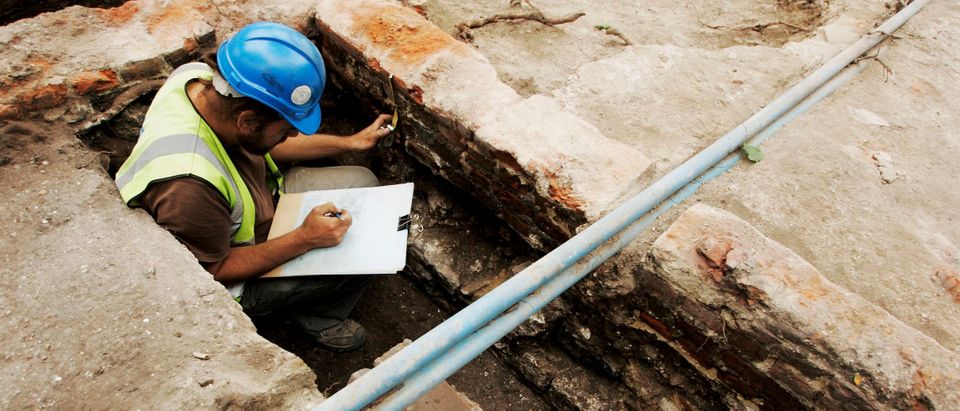Archaeologists in England announced Tuesday they uncovered a medieval burial site so historically significant they’ve termed it “an archaeologist’s dream.”
The Museum of London Archaeology team stumbled upon the remains of a woman buried between 630 and 670 AD near the village of Harpole in Northamptonshire, according to The Guardian. Buried alongside her was an intricate necklace made of gold, garnets and various other semi-precious stones. The necklace is reportedly the richest of its kind ever unveiled in Great Britain, and features an unprecedented level of craftsmanship for its period.
The grave also contained a large, intricately adorned cross, as well as two pots holding an unfamiliar material that has yet to be examined, according to The Guardian.
Given such riches, experts deduced the buried woman must have been highly wealthy. She was likely a leader in the Christian community and may have been one of the earliest women to obtain a highly ranked status in the church, the archaeologists said, according to the outlet. (RELATED: Archaeologists Discover Tomb Of Ancient Mercenary, What They Found Is Bizarre)
“This is the most significant early medieval female burial ever discovered in Britain. It is an archaeologist’s dream to find something like this,” Levente Bence Balázs, leader of the excavation, told The Guardian. “This is a find of international importance. This discovery has nudged the course of history, and the impact will get stronger as we investigate this find more deeply.”
Medieval female burial site found near Harpole is ‘most significant ever discovered’ in UK https://t.co/VNonYKKQaS
— The Guardian (@guardian) December 6, 2022
The burial itself shows evidence of a point in time when paganism was changing alongside Christianity.
“This is a fascinating burial of combined iconography: the burial bling has a distinctly pagan flavor, but the grave is also heavily vested in Christian iconography,” Simon Mortimer, an archaeology consultant for the RPS group, said, according to the outlet.
“These mysterious discoveries pose so many more questions than they answer. There’s so much still to discover about what we’ve found and what it means,” Balázs reportedly added.
Part of the mystery surrounding the discovery is that historically there were no other burial sites or ancient churches near the dig. Homebuilders from the Vistry Group previously commissioned a search of the area before they began developing the land, according to The Guardian.
Daniel Oliver, Vistry’s regional technical director, said he’s had a lot of interaction with archaeologists “ringing me up in great excitement about pot shards” in his nearly two decades working with the group. When the team discovered the medieval burial site in Harpole, he knew they had stumbled upon something a little more significant.
“I had five missed calls from Simon on my phone,” Oliver told The Guardian. “I knew then that this was about more than pot shards. Exciting as pot shards are.”
Vistry waived its rights to what has been dubbed the Harpole Treasure, handing the site over to the state, the outlet reported. The archaeology team hopes that once conservation work on the treasure is complete, likely in at least two years, they will be able to display their findings locally.


